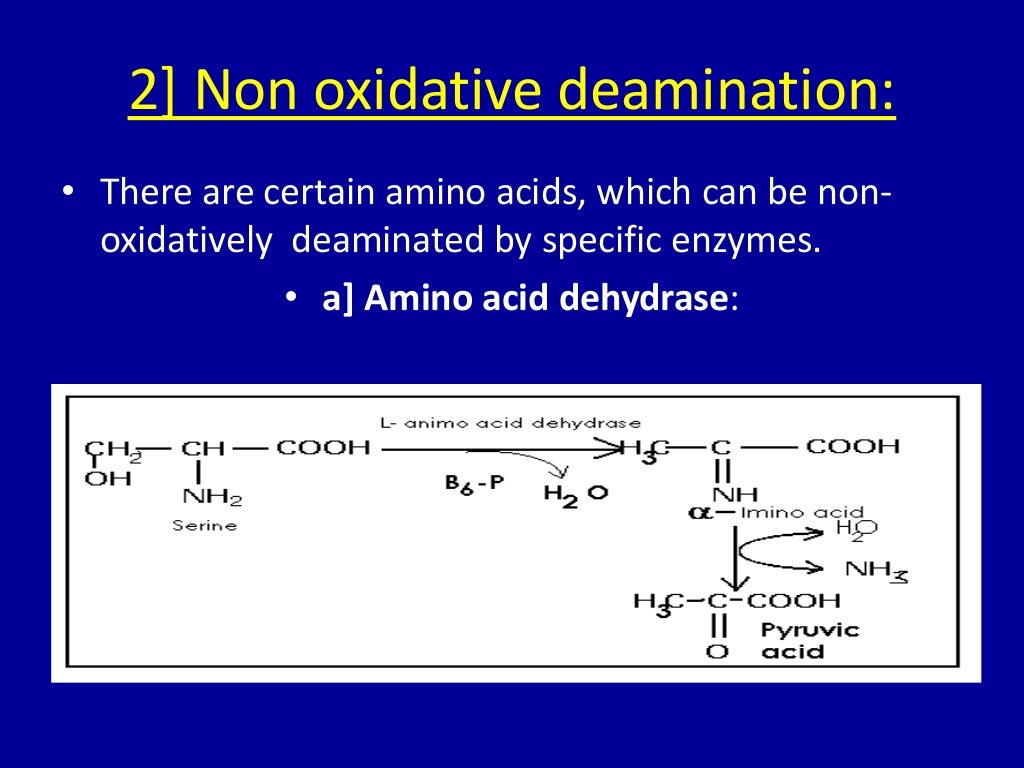
General Reactions involved in amino acid metabolism
Oxidative Deamination. In the breakdown of amino acids for energy, the final acceptor of the α-amino group is α-ketoglutarate, forming glutamate. Glutamate can then undergooxidative deamination, in which it loses its amino group as an ammonium (NH 4 +) ion and is oxidized back to α-ketoglutarate (ready to accept another amino group):

The Oxidative Deamination of Amino Acids docx D. Lamees Muhadharaty
Nonoxidative deamination is a type of deamination reaction in which the removal of the amine group occurs without proceeding through an oxidation reaction. H.

PPT Chapter 7 Catabolism of Proteins PowerPoint Presentation, free download ID599911
Amino acid metabolism lecture on Nonoxidative deamination.http://shomusbiology.com/Download the study materials here-http://shomusbiology.com/bio-materials.h.

PPT Protein metabolism PowerPoint Presentation, free download ID3540412
May 8, 2023 by Vivek Kumar Oxidative and Non- Oxidative Deamination Contents: Introduction Oxidative deamination Non-oxidative deamination Difference between oxidative and non-oxidative deamination. Introduction The removal of amino group from the amino acid as ammonia (NH 3) is called deamination.
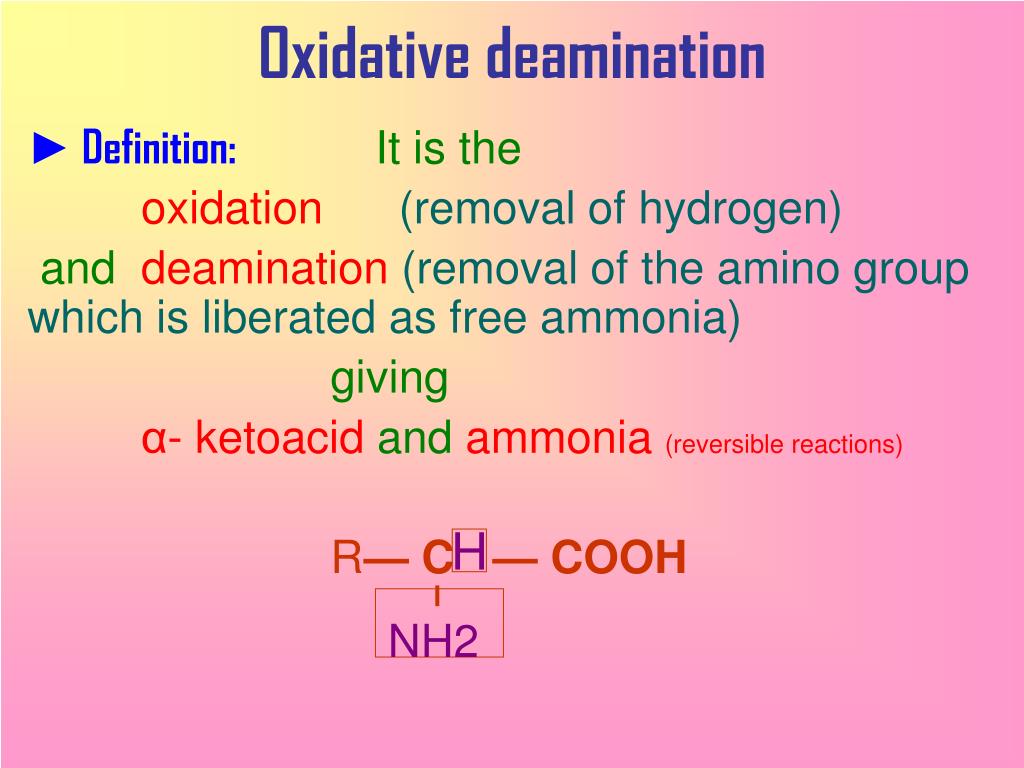
PPT Protein metabolism PowerPoint Presentation, free download ID3540412
Oxidative Deamination. In the breakdown of amino acids for energy, the final acceptor of the α-amino group is α-ketoglutarate, forming glutamate. Glutamate can then undergooxidative deamination, in which it loses its amino group as an ammonium (NH 4 +) ion and is oxidized back to α-ketoglutarate (ready to accept another amino group):

Deamination Oxidative and nonoxidative deamination YouTube
Deamination may be either oxidative or non- oxidative. Urea Cycle: ADVERTISEMENTS: Urea is the end product of protein metabolism (amino acid metabolism). The nitrogen of amino acids converted to ammonia is toxic to the body. It is converted to urea and detoxified. As such, urea accounts for 80-90% of the nitrogen containing substances excreted.

Oxidative Deamination Oxidative and nonoxidative deamination amino acid catabolism. YouTube
Glutamate is the only amino acid that undergoes oxidative deamination to a significant extent to liberate free NH3 for urea synthesis. All amino acids
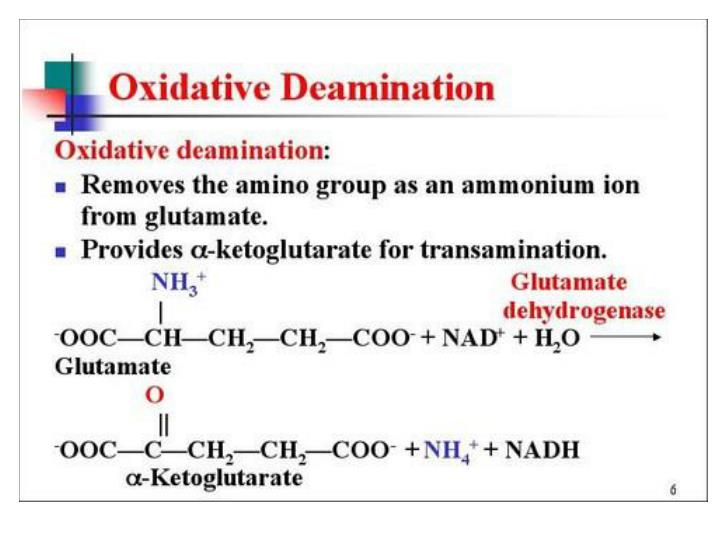
🐈 Transamination and deamination. What is Deamination? (with pictures). 20190118
Non-oxidative Deamination In nonoxidative deamination, the amine group is removed without the oxidation process. A byproduct of non oxidative deamination is ammonia, producing consequent a-keto acids. Hydroxyl acids with one or more hydroxyl groups undergo non oxidative deamination.

Video 7 non oxidative deamination YouTube
This video talks about Oxidative Deamination and amino acid catabolism.Also follow me on other social media -Facebook: https://www.facebook.com/arpan.parich..

PPT Chapter 7 Catabolism of Proteins PowerPoint Presentation, free download ID599911
3.1.2 Non-oxidative Deamination. It is the deamination of amino acids in the absence of molecular oxygen in cells. Non-oxidative deamination takes place by substrate-specific enzymes. Depending on types of amino acids, non-oxidative deamination has the following three types:

Nonoxidative deamination. D. Transdeamination It is a... Download Scientific Diagram
Oxidative Deamination. In the breakdown of amino acids for energy, the final acceptor of the α-amino group is α-ketoglutarate, forming glutamate. Glutamate can then undergo oxidative deamination, in which it loses its amino group as an ammonium (NH 4 +) ion and is oxidized back to α-ketoglutarate (ready to accept another amino group):
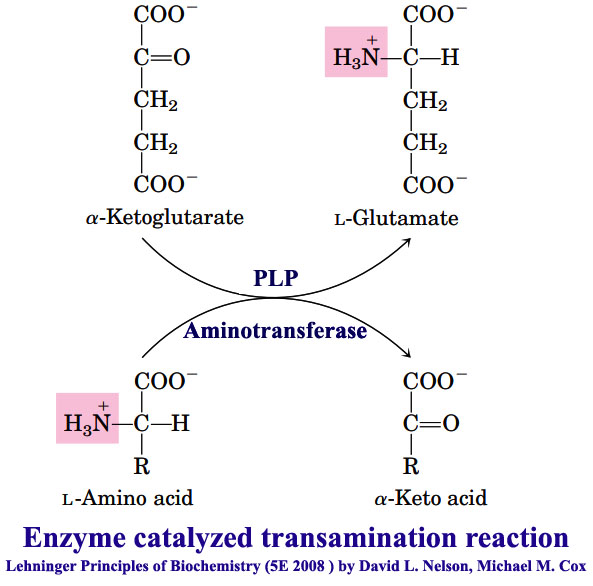
General reactions of amino acid metabolism Transamination, Oxidative and Nonoxidative
#deamination #oxidation #aminoacids #metabolismDeamination is the removal of an amino group from a molecule. Enzymes that catalyse this reaction are called d.

Protein and amino acid metabolism online presentation
Figure 6.4.1 6.4. 1: Generic transamination reaction where the top keto acid is converted to an amino acid, while the bottom amino acid is converted to a keto acid 1. Keto acids (also known as carbon skeletons) are what remains after amino acids have had their nitrogen group removed by deamination or transamination.
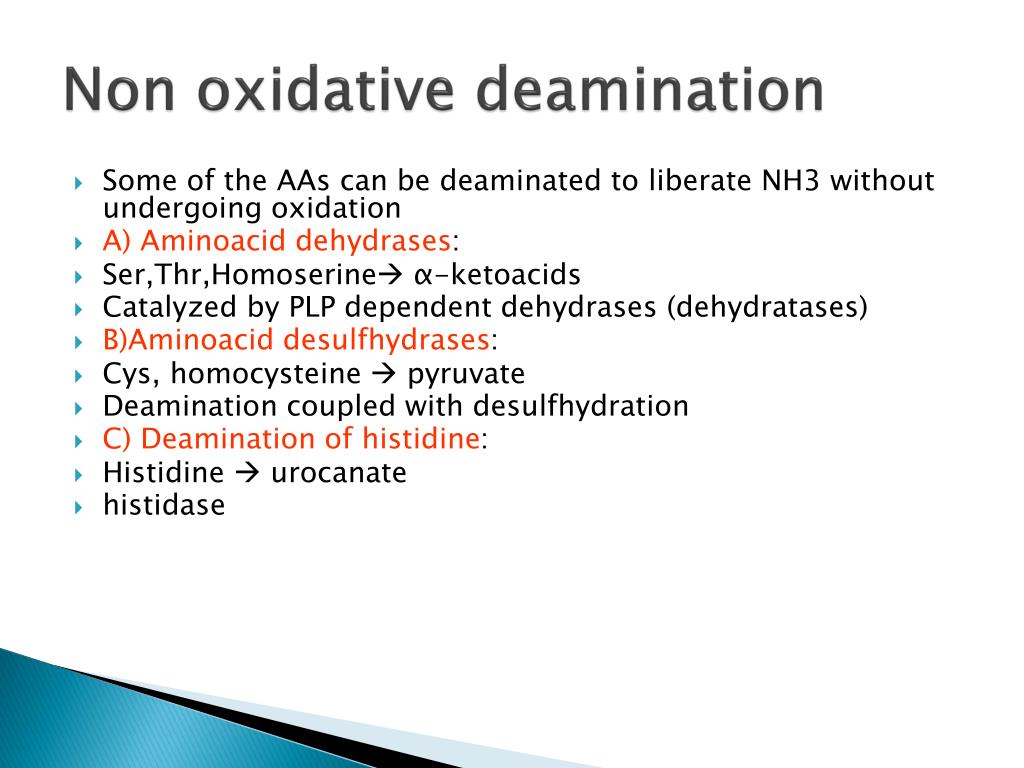
PPT AMINO ACID METABOLISM PowerPoint Presentation, free download ID7122612
An overview of the oxidative deamination of N -acetylneuraminic acid derivatives (Neu5Ac) leading to the formation of ketodeoxynonulosonic acid (KDN), its stereoisomers and glycosides is presented.

Non Oxidative Deamination Reactions YouTube
Nonoxidative deamination is a type of deamination reaction in which the removal of the amine group occurs without proceeding through an oxidation reaction. However, this type of deamination reactions liberates ammonia, producing the corresponding α-keto acids.

PPT Chapter 7 Catabolism of Proteins PowerPoint Presentation, free download ID599911
Non oxidative deamination Transamination Most amino acids are deaminated by transamination reaction catalysed by aminotransferases or transaminases. The -amino group present in an amino acid is transferred to an -keto acid to yield a new amino acid and the -keto acid of the original amino acid.